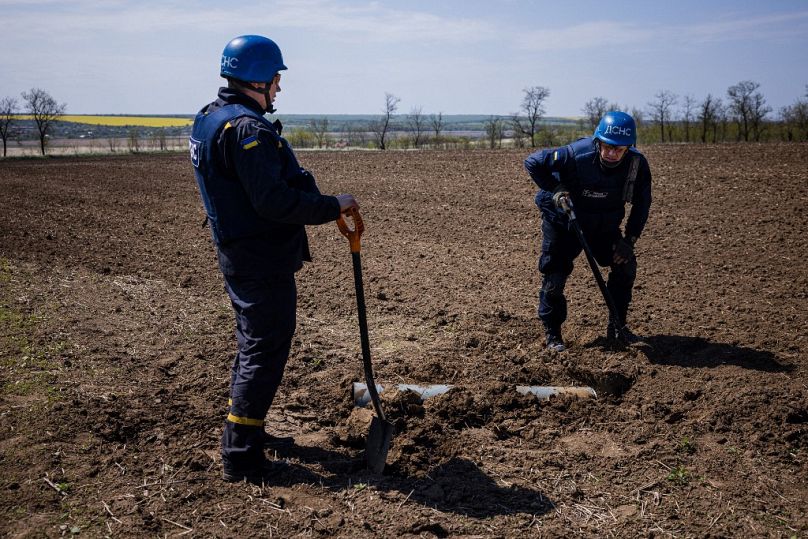Once the war is over, Ukraine is hoping to take Russia to court over the billions of euros of damage the war has inflicted on the environment.
Ukraine has suffered significant losses since Russia invaded Ukraine on 24 February this year. While much has been reported about the impact on human life, the toll the war is having on the environment has been less well covered.
But, since those very first days, Ukraine’s Environment Ministry has been determined to record the damage inflicted on the natural world.
It says it has so far found 257 instances of environmental crime in Ukraine. The cost of this damage is thought to be around €6.6 billion.
The Environment Ministry is amassing evidence with the hope of one day taking Russia to court. Though getting full compensation for the damage could take years, it is working with international law firms to help build a strong legal case.
A special task force of around 100 people, coordinated by the Ecological Inspectorate of Ukraine, is investigating environmental crimes committed during the war.
Pictures, satellite images, videos and samples from areas of fighting are being collected in order to hold Russia accountable in the future.
Why are attacks on Ukraine’s industrial areas so dangerous?
Ukraine’s eastern industrial heartland has been the focus of many of the attacks. Russian forces have hit water facilities, food storage, chemical factories and even nuclear power plants.
“Ukraine is a really industrialised country and attacks on the east especially mean that the industrial facilities were ruined,” Natalia Gozak, executive director of Ukrainian environmental organisation Ecoaction, tells Euronews.
“And all the damage is not only damage to the economy and loss of human lives and wellbeing, but it also impacts to the environment.”
She adds that, while it might not be as “impressive” or “frustrating” as the loss of human lives, it still means air, soil and groundwater pollution that will last for years. This environmental damage could have a long-term impact on people’s health and the economy of the country.
“All the territories around, even when we rebuild and reconstruct, would still pose some certain pressure to humans as well."
The most dangerous threats right now are those connected to the occupation of nuclear power plants. While there is yet to be any significant reported damage to these sites, Gozak says they pose the highest potential risk.
“Those periods when the Chernobyl zone was occupied were already very stressful,” she explains.
“Still, the Zaporizhzhia nuclear power plant, the biggest in Europe, is under Russian occupation. The risks there mean that it is possible that nuclear contamination could impact not only Ukraine but the whole of Europe.”












